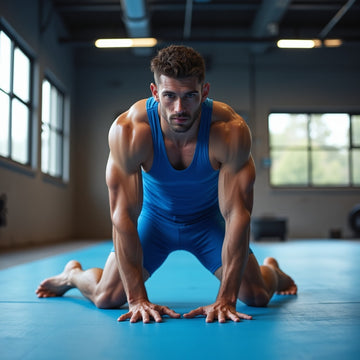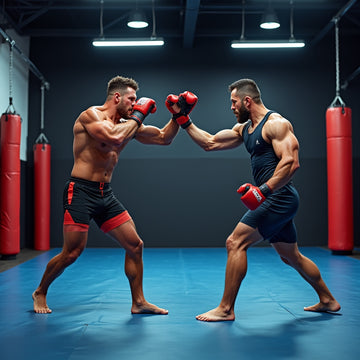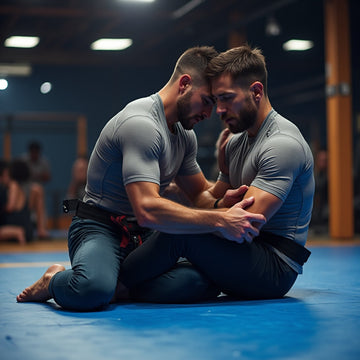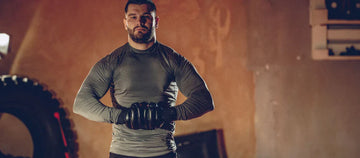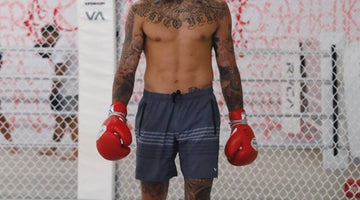A BJJ wrestling singlet combines freedom of movement with sleek coverage, ensuring grips don’t snag, fabric stays smooth, and hygiene remains top-notch. Ready to fine-tune your comfort and performance in the gym? Check our beginner's guide to how to choose a wrestling singlet for BJJ.
Table of Contents
- Why Wear a Wrestling Singlet in BJJ?
- Choosing the Right Fit and Size
- Materials and Fabric Considerations
- Hygiene and Maintenance Tips
- Layering Under Your Singlet
- Styling and Personalization
- Common Mistakes to Avoid
- Singlet vs Rash Guard: Pros and Cons
- Understanding Tournament Rules and Regulations
Why Wear a Wrestling Singlet in BJJ?
Wondering why some athletes slip into a one-piece singlet for Brazilian jiu-jitsu instead of sticking with a rash guard or gi? It boils down to streamlined coverage and minimal friction. A well-fitted singlet clings close to your torso, cutting down on excess fabric that opponents might latch onto.
The design encourages full range of motion—no baggy sleeves or loose collars getting in the way when you shoot for a double-leg. Plus, it offers a psychological edge: that sharp, minimalist look can boost confidence and signal seriousness about grappling technique. You know what? It feels kind of empowering to train without constantly readjusting.
Then there’s hygiene. Dead space under sweat-soaked bits of clothing can harbor bacteria, leading to irritation or even skin infections. With a wrestling singlet, less fabric means easier drying times and fewer crevices for germs to hide. It’s a smart move if you train multiple sessions a day.
If you’re curious about models that blend performance with bold graphics, check out the Baphomet’s Wrath Wrestling Singlet.
Choosing the Right Fit and Size
Getting the perfect fit is half the battle. A singlet that’s too tight will restrict breathing at higher intensities. Too loose? You’ll spend class yanking it back up—distracting and unprofessional. Start by measuring chest, waist and hip circumference, then cross-reference with size charts from reliable brands.
Fabric stretchability varies by maker, so always read user reviews about snugness and recovery after wash. For example, the Against All Gods Wrestling Singlet runs slightly large, so many athletes size down one notch for a firm, compressive feel. Others prefer a bit more give—especially if you often roll with lower belt ranks who go for kimuras and triangle chokes.
Here’s a quick set of pointers to lock in a solid fit:
- Shoulder seams should sit right at the edge of your deltoids.
- Leg openings must hug the thigh without pinching skin.
- Torso length shouldn’t cut into underarms or cradle your hips awkwardly.
- Test squat, sprawl and hip-escape movements during try-ons.
If you’re between sizes, lean toward the smaller model for a performance edge—but only if it feels breathable. Comfort and ventilation go hand in hand with grip control on the mat. Discover precise singlet sizing for BJJ on our sizing page.
Materials and Fabric Considerations
Choosing top-notch fabric is crucial. Most high-end singlets blend nylon with spandex or polyester with elastane. Nylon offers durability and moisture wicking; spandex adds stretch for unrestricted movement. Polyester tends to be slightly coarser but dries lightning-fast, while elastane boosts shape retention.
Consider weight: lightweight weaves feel almost like a second skin, whereas heavier knits bring extra abrasion resistance—handy if you roll on rough gym mats or spar often in open guard. If you’re prone to overheating, look for mesh-vent panels under the arms or along the spine.
If you want durability and a bit of flair, the Angel of Death Wrestling Singlet showcases high-density fabric that holds up after dozens of washes. Its sublimated graphics won’t peel or fade, even under bright gym lights.
Stretch recovery matters. You don’t want your singlet sagging mid-roll. Test bounce-back by pulling on corners after washing; if it takes time to snap back, consider swapping it out sooner rather than later. Learn more about the best fabric for wrestling singlets in BJJ.
Hygiene and Maintenance Tips
Keeping your singlet clean isn’t just about smell—it’s about mat safety. Bacteria and fungi thrive in damp environments, so wash your singlet after every session. Review our washing instructions for wrestling singlets in BJJ for best results.
A quick rinse in cold water right after training can cut down stubborn odors. When you launder, use a gentle detergent free of optical brighteners or fabric softeners—those chemicals can degrade elastic fibers. Here’s a concise care checklist:
- Pre-soak in cold water with a dash of white vinegar to neutralize odors.
- Machine-wash inside out on a delicate cycle.
- Avoid high-heat drying; air-dry flat to maintain shape.
- Inspect seams regularly for wear and reinforce loose threads.
- Store in a breathable bag—never in airtight lockers right after use.
Think of your singlet like a prized tool—regular checks extend its life and keep you rolling in hygienic gear. Replace any item showing fabric thinning or persistent odor even after multiple washes.
Layering Under Your Singlet
What you wear under the singlet can influence comfort and performance. Many athletes go braless or just slap on a pair of compression shorts. Others slip in a minimal rash guard for extra coverage and hygiene.
If you choose a base layer, opt for seamless designs with flatlock stitching to prevent chafing. The Blessed Saint Rash Guard pairs perfectly under a one-piece, offering antimicrobial treatment and moisture control.
Here are a couple of quick guidelines:
• Avoid bulky layers—keep it thin and breathable. • Make sure undergarments don’t extend beyond the singlet’s edges.
Some competitors swear by skin-tight compression shorts only: they manage sweat well and can double as spats if you prefer leg coverage. Either way, the goal is to reduce friction, manage moisture, and stay cool.
Styling and Personalization
Sure, you want functionality first—but injecting a bit of personality never hurts. From bold prints to team logos, your singlet can become a signature piece. Just keep in mind that overly thin inks or heavy patches might affect stretch.
The Archangel Michael Wrestling Singlet nails balance: eye-catching art without compromising flexibility. Sublimated graphics ensure zero added bulk, and the flat seams cut irritation under the shoulder blades.
Playing with color psychology can also be a subtle mental game. Reds and blacks read aggressive, calming blues and greens can soothe nerves before a big roll. Trust your gut but stay consistent—switching styles too often might distract partners who train with you regularly.
Finally, consider adding small patches or embroidery with your initials or gym logo. Make sure adhesives are heat-set and won’t peel after repeated stretches. That personal touch can make you feel more at home on the mat.
Common Mistakes to Avoid
Even seasoned grapplers stumble into pitfalls when trying out a new singlet. One frequent slip-up? Buying purely for looks and ignoring performance specs. Always balance form with function.
Another misstep is neglecting break-in time. New singlets often come stiff; jump into a few solo drills first—shrimping, bridging, technical stand-ups—before attempting live sparring.
Be wary of overly cheap models. The Bone Reaper Wrestling Singlet proves that budget-friendly doesn’t have to mean low quality, but ultra-low-cost imitations might tear after weeks.
Finally, avoid ignoring care instructions. Skipping the label’s advice on temperature or detergents can shrink panels and warp prints. Keep that cycle gentle, and you’ll steer clear of unnecessary headaches.
Singlet vs Rash Guard: Pros and Cons
| Feature | Wrestling Singlet | Rash Guard |
|---|---|---|
| Coverage | Full torso and thighs | Upper body only (unless paired with spats) |
| Friction | Minimal—snug fit | Moderate—loose sleeves can snag |
| Heat Management | Better airflow below arms | Can trap heat if thick |
| Style Variety | One-piece designs, bold graphics | Endless prints, color combos |
| Maintenance | Simple one-piece wash | Multiple items (top + bottom) |
Pros and Cons:
- Pros (Singlet): Streamlined fit, easy washing, fewer snag points.
- Cons (Singlet): One-size-fits-many feels restrictive for some; may feel revealing.
- Pros (Rash Guard): Versatile layering, comfortable sleeves, wide brand choices.
- Cons (Rash Guard): Extra pieces to manage; potential snag at seams.
Understanding Tournament Rules and Regulations
Before stepping onto competition mats, always check the rulebook. Many BJJ federations limit permissible attire. A singlet is often allowed in NAGA or certain no-gi tournaments, but IBJJF events may only accept rash guards and board shorts or spats.
Key factors to review:
• Fabric thickness and opacity requirements. • Approved color schemes—some organizations restrict white or high-contrast patterns. • Logo sizes and placement; oversized branding might lead to penalties.
Keep your singlet lint- and debris-free to avoid point deductions. If you’re unsure whether your preferred design fits regulations, reach out to event organizers or review online rule summaries well before match day. Being prepared means one less thing to worry about when you hit that center mat.
In summary, the right wrestling singlet in BJJ is all about fit, fabric choice, hygiene and style—balanced with awareness of competition guidelines. With these insights, you’ll look sharp, feel comfortable, and perform at your best every roll.
Updated: 08-21-2025

